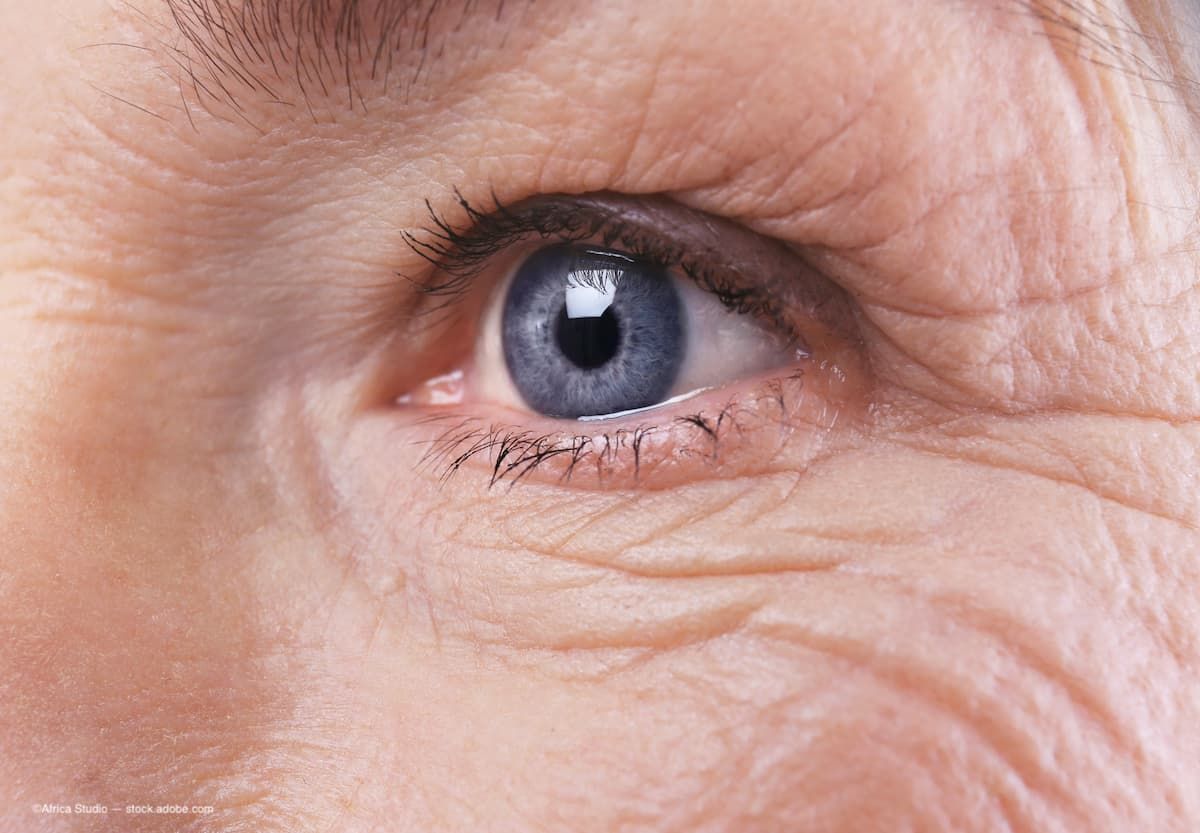Publication
Article
Digital Edition
New treatment tackles both forms of AMD
Author(s):
Therapies to target geographic atrophy are in sight.
today there are several treatments for age-related macular degeneration (AMD).(Image Credit: AdobeStock/Africa Studio)

Reviewed by Katherine Talcott, MD
Once there were none, but today there are several treatments for age-related macular degeneration (AMD). Even more are available for wet AMD, although research is also focused on dry AMD. In addition to preserving and improving vision, the goal is to reduce treatment burden.
Katherine Talcott, MD, a staff surgeon at the Cole Eye Institute and an assistant professor at the Lerner College of Medicine, in Cleveland, highlighted the more recent additions to the armamentarium in a presentation at the Virtual Vision Research Symposium.
Wet AMD
Anti–vascular endothelial growth factor drugs—which have been highly effective at improving vision in randomized trials—are the first-line therapy for neovascular AMD. However, Talcott noted, real-world studies illustrate that it is difficult to achieve good long-term outcomes owing to the undertreatment that heavy treatment burden puts on patients, caregivers, and clinicians.
The hope had been that the ranibizumab (Susvimo) implant from Genentech, a permanent, refillable, surgically implanted device that releases medication continuously, would alleviate the burden for patients with neovascular AMD. However, this port delivery system is temporarily under recall because of dislodgement of internal structures.
Faricimab (Vabysmo; Genentech) is a bispecific antibody that is injected intravitreally and inhibits both VEGF-A and angiopoietin-2. In clinical trials, visual acuity gains with faricimab were equivalent to those achieved with aflibercept (Eylea; Regeneron Pharmaceuticals). A distinct advantage of faricimab is that much fewer injections of it are needed than of aflibercept, a finding that suggests it may be more durable.
But the holy grail of neovascular AMD treatment is a one-and-done option, and this is where gene therapy may play a role. RGX-314 (RegenxBio) is a surgically implanted gene therapy that encodes for an anti-VEGF protein. The phase 1/2 trial results were promising, Talcott reported, and the subretinal implant is currently being evaluated in 2 phase 3 trials, ATMOSPHERE and ASCENT. “This is a promising option,” she said.
Dry AMD
Geographic atrophy (GA), the end stage of dry AMD for which until recently no treatments were available, has become a major research target of late. Most of the agents being evaluated are complement inhibitors of C3 and C5, important factors in the development of eye inflammation and cell death.
The complement C3 inhibitor pegcetacoplan (Syfovre; Apellis) was recently approved for GA. After a phase 2 study showed that it slowed disease progression, the DERBY and OAKS (NCT03525600) studies, whose primary end point is change in total area of GA lesions at 12 months, both showed significant changes in the rate of growth at 18 months in those receiving active treatment. Unfortunately, no functional improvement in vision was seen with pegcetacoplan.
Another drug under study is avacincaptad pegol (Zimura, Iveric Bio), a C5 inhibitor that was observed to slow GA growth in the GATHER 1 and 2 studies (NCT02686658; NCT04435366), the end points of which were also GA growth rate. With both investigational drugs, the rate of conversion to neovascular AMD is higher than with sham treatment.
Gene therapy may also play a role in controlling GA. Gyroscope Therapeutics is looking at a complement factor I, GT005, in the FOCUS study, in which the therapy is delivered into a bleb created in the subretinal space.
“Neovascular AMD and GA both result in irreversible vision loss that require effective treatments to reduce…individual and societal treatment burden. Many studies are ongoing and investigating a number of therapeutic options. There also may be a role in the future for…surgical innovations that may help address…treatment burden,” Talcott concluded.
Katherine Talcott, MD

Katherine Talcott, MD
E: talcotK@ccf.org
Dr Talcott conducts research for RegenxBio and Zeiss, is a consultant to Apellis, Eyepoint, and Genentech, and a member of the latter’s speaker’s bureau.

Newsletter
Don’t miss out—get Ophthalmology Times updates on the latest clinical advancements and expert interviews, straight to your inbox.





